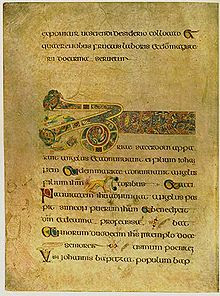Just as the
massive Muckross establishment appears with awe beyond measure, the Muckross house
is marked with an intriguing history. The Irish Studies Program paid a visit to
the storied house in order to have a guided tour through the inside as well as explore
the Muckross Peninsula. The building of the Muckross House commenced in 1839 by
Henry Arthur and Mary Herbert and was completed in 1843. This predates the
Irish Famine by two years. The Herbert family was long associated with land in
the area dating to the 1770s and it continued in this way until financial
strife rendered the family unable to acquire loans. Notably, in 1861, Queen
Victoria visited Ireland and stayed at this estate. Many renovations took place
in order to accommodate the Queen’s party in the most paramount way possible.
Perhaps, this was one of the factors leading to financial strife. Ultimately,
the estate was forfeited to Standard Life Assurance Company in 1897. After
passing through the hands of the Guinness family for several years, Mr. William
Bowers Bourn, a wealthy American, purchased the Muckross property as a wedding
gift for his daughter in 1910. Bourn’s daughter, Maud, died in 1929 and in
1932, her widowed husband, Mr. Arthur Rose Vincent, wrote to Mr. Eamon De
Valera conveying that he intended to present the Muckross property to the Irish
nation. Indeed, the estate was to be maintained as a national park for the
enjoyment of the public for which it now serves at Killarney National Park.
Being guided through the home and learning of the details and people associated
with the land was a gleaning experience for all of us.
Observing the outward appearance of
the home and the land around it renders one feeling quite small and uncomprehending
of how someone could live so splendidly. The outside of the home appears
powerful, yet, elegant at the same time. Upon entering the inside, the story
continues. An incalculable number of mounted animal heads, mainly Irish Red
Deer, hovered above our heads in several rooms. Hunting was one of the
Herbert’s hobbies. Chandeliers, giant doorways, high ceilings, and enormous
beds complement the house. Moreover, the artistry of dressers, cabinets,
woodwork, the chessboard, a game board, the pool table, tables, chairs, windows
and mirrors certainly add to the elegance of the home. Many items were hand
carved and are composed of special materials. For example, one of the windows
is made of crystal.
The significance of the history lies
in the amount of respect that was given to Queen Victoria. Despite her stay of
only a few days, major renovations took place and were a burden on the owners
even amidst their wealth. The Queen’s visit in 1861 is only one of four visits
to Ireland, but it seems that each visit to Ireland was quite warm and welcome
despite the animosity occurring between English and Irish. Lastly, the
preservation of the estate displays historically how such wealthy people lived
and the contrite contrast between the wealthy and poor, which we still see
today. One should be reminded that the home was finished two years prior to the
potato famine, which had devastating effects on Ireland, specifically those of
the lower class.
On top of the rich history behind
this estate, it has modern significance because it preserves a piece of the
story of Ireland. It may not represent Ireland or the people of Ireland as a
whole, but it allows us to view life through the perspective of wealthy and
prominent figures. Moreover, visiting the house offers us a more keen
understanding of the respect and power that the Victorian monarch possessed.
And in this we can appreciate why the estate has been preserved as part of the
Killarney National Park.
Upon personal reflection, people in
our group each had certain aspects that instigated some type of feeling or
memory. One member felt nostalgia and a longing for the times of the Muckross
house. Another underscores the size and components of each room; each room had
a unique purpose or quality. For example, the billiard room was meant only for
the men to socialize in. Furthermore, another room had a cabinet that kept tea
locked up because tea was rare and expensive at the time. Collectively, we all
saw sophistication in various ways. The servant system illustrates this well.
While all the servants stayed in rooms in the basement, there was a
well-engineered bell system in the basement hallway; each servant was
designated a bell and each bell was linked through a wire to a specific room.
Thus the servants could be summoned from anywhere in the house. It is important
to note that each bell was different in size so the servants knew based on
sound when they were being summoned. More sophistication is seen in the kitchen
and ice storage because ice had to be imported and strategically stored.
Many aspects contribute to the elegance, power, artistry, and sophistication of the Muckross house and its history and one cannot fathom the beauty of the land around it until he sees it. Our site visit was a good way of seeing one part of Irish history through a lens other than our own. All in all, the families that owned the land, the servants that labored there, Queen Victoria’s visit, Irish history, and our visit boils down to relationship. That is the intangible quality that this visit offered us; the significance of relationship under any circumstance.
Outside of Muckross house
View looking outside behind the house
Vestibule
Library















